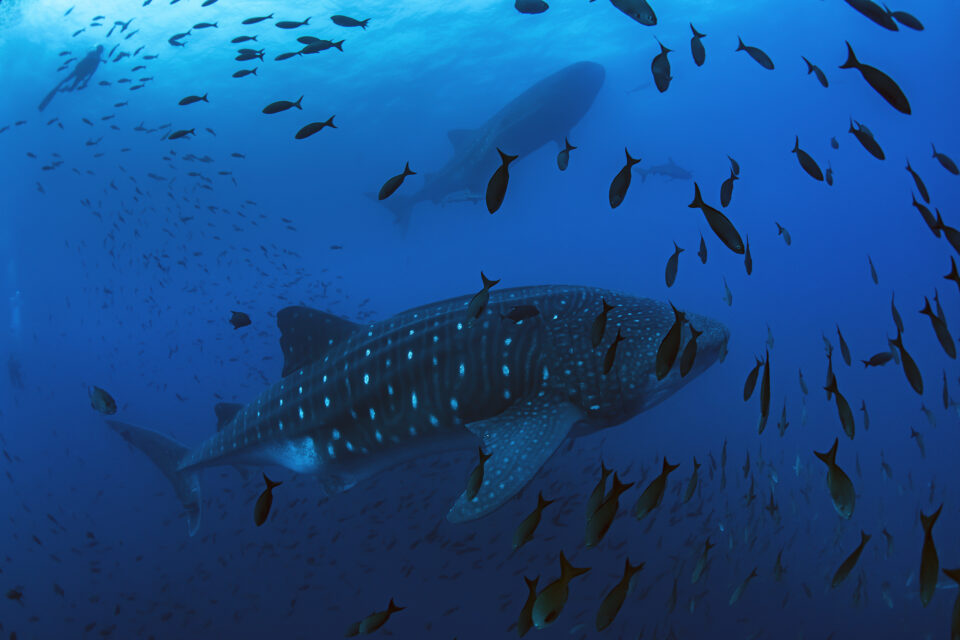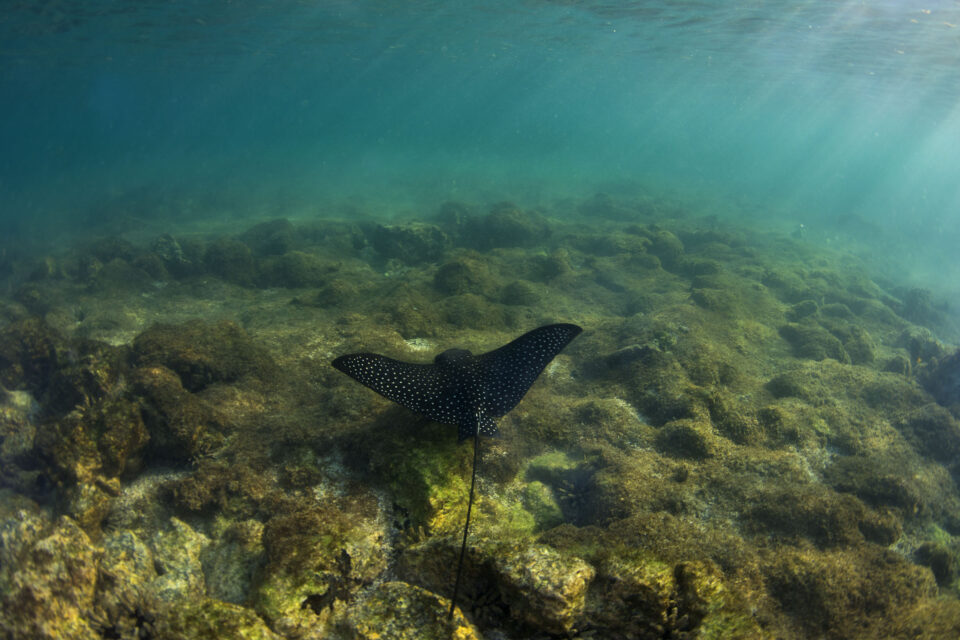

The Galapagos Marine Reserve turns 20
As we celebrate 20 years of the Galapagos Marine Reserve, we also look at the threats to marine life that still exist in the seas around Galapagos.
The Galapagos Marine Reserve (GMR) has drawn adventurers, divers and researchers alike into its mesmerising depths for, what is now, two decades as an official Marine Protected Area and, since 2001, a UNESCO World Heritage Site. One of the most diverse and significant marine sites in the world, it is home to endemic and bizarre creatures such as the marine iguana; the only marine feeding lizard that looks like it came straight out of Jurassic Park. With countless migratory species of sharks, whales, turtles and fish the GMR’s importance reaches a global scale.
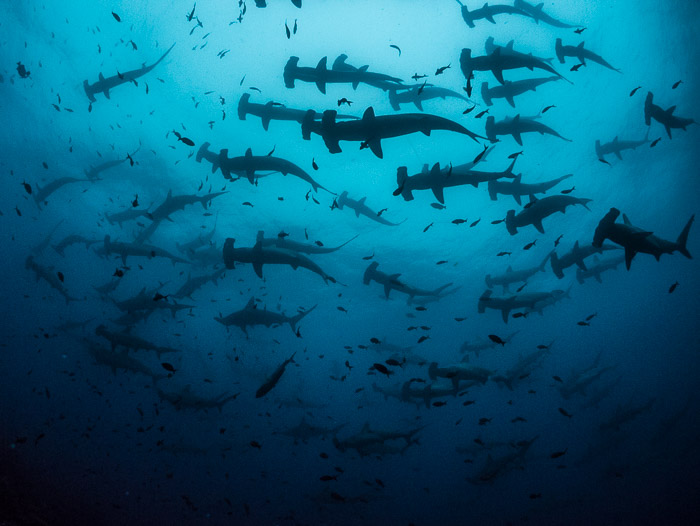
The GMR is home to a range of sharks including scalloped hammerhead sharks © Simon Pierce
Threats
Despite this protection, however, in its 20 years the GMR’s resources have faced major threats, and most publicly from the illegal wildlife trade. In November 2017, a Chinese vessel was found with thousands of sharks on board and, in January 2018, an Ecuadorian vessel was seized with 156 sharks onboard, including multiple specimens of the highly endangered silky shark. Although legal, it is estimated that at least 250,000 sharks are landed outside the Reserve as ‘by-catch’ by Ecuadorian fisherman. A large proportion of catches frequently consist of females and juveniles.
Today plastic waste is one of the most public threats to the marine ecosystem and Galapagos is no exception, with increasing pressures of waste disposal from rising population numbers and visitors. It is also possible that plastic waste arrives on the triad of ocean currents which also bring the nutrient-rich waters that fuel the heart of this marine oasis. The management of this will be vital as we enter the next 20 years of the Reserve.
Protection
Despite multiple threats, positive change has also occurred through the GMR’s 20 years, such as the zoning of a new marine sanctuary in 2016. This covers the diverse waters around Darwin and Wolf islands, with no fishing or natural resource removal allowed. Studies have shown that marine life is distributed in hotspots within the reserve, with high congregations of scalloped hammerhead sharks around the south eastern waters of Wolf. The Galapagos Islands are a magnet for a variety of endangered and mesmerising shark species, many of which are migratory. Therefore, research into their journeys and protection outside the GMR is of high significance. The Reserve’s approach focuses on zoning areas with specific protection and uses, which corresponds with each of the areas ecological importance. This alone, however, cannot be the only solution to threats of over-exploitation and is not effective without enforcement. Managing the world’s second largest marine reserve comes with managing the conflicts of different stakeholders. It is important to work with tourists, businesses and the local fishing community. That is why the conservation organisations working in Galapagos engage with the public, and provide education and local support. We are building a marine-aware generation and a sense of belonging.
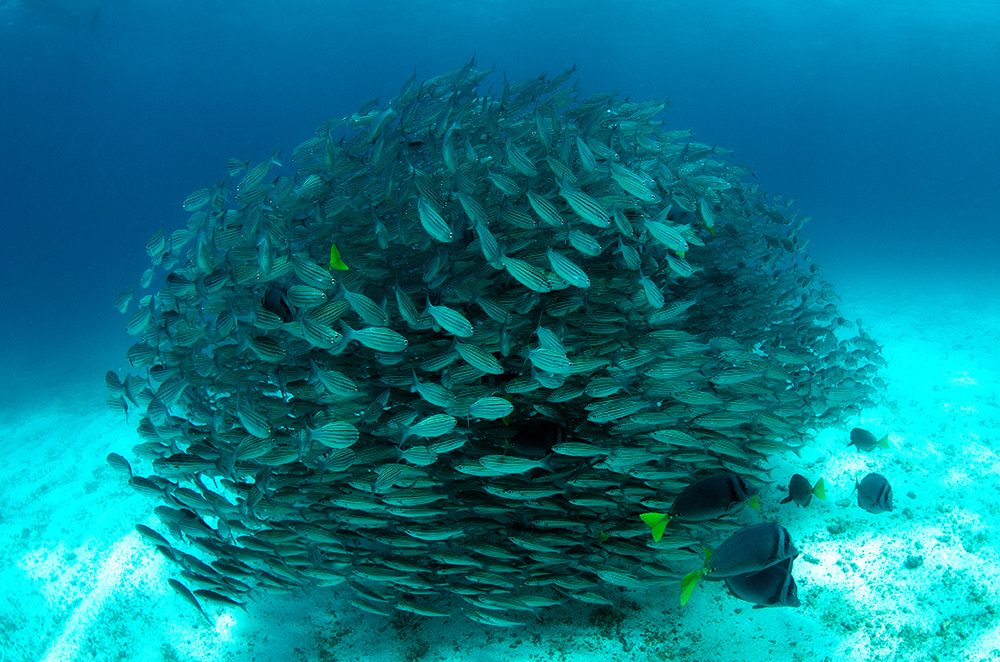
We need to conserve the GMR and its resources, like these razor surgeonfish, for future generations © Jonathan Green
There is no doubt that our fascination with this corner of the world will only grow over the next 20 years, intrigued by the new research that is constantly occurring. It is a privilege to be able to visit Galapagos, so we have to ensure that is conserved for future generations.
Related articles

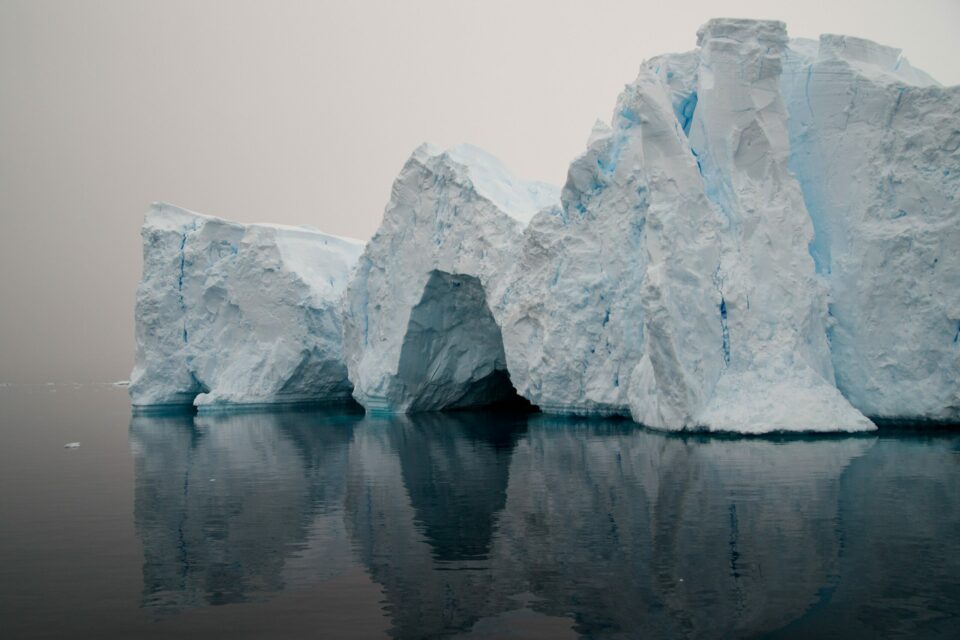
Galapagos and the Antarctic: A look beneath the surface
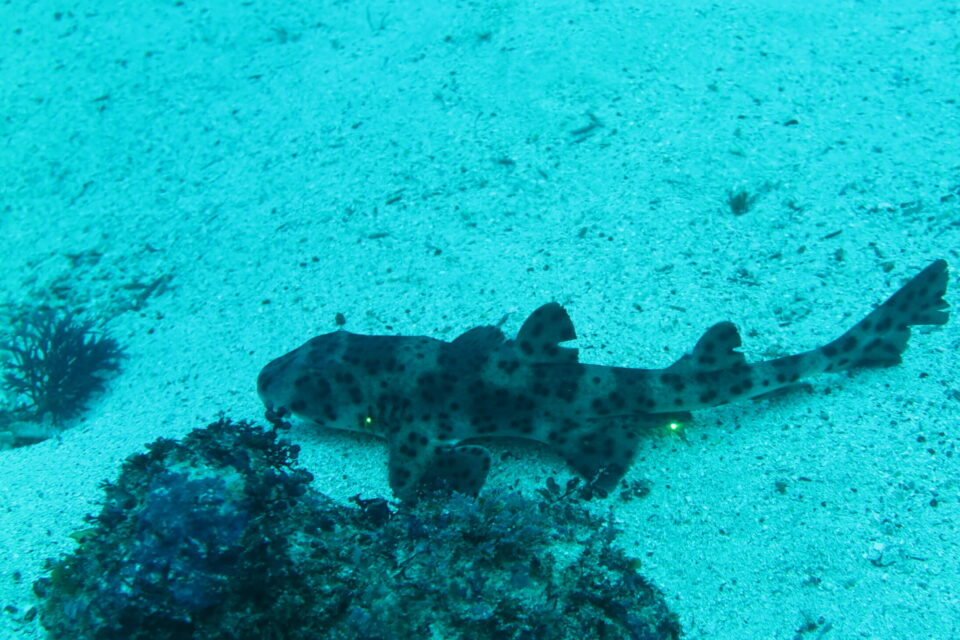
Galapagos Bullhead Shark Project: Citizen science in the Galapagos Marine Reserve
